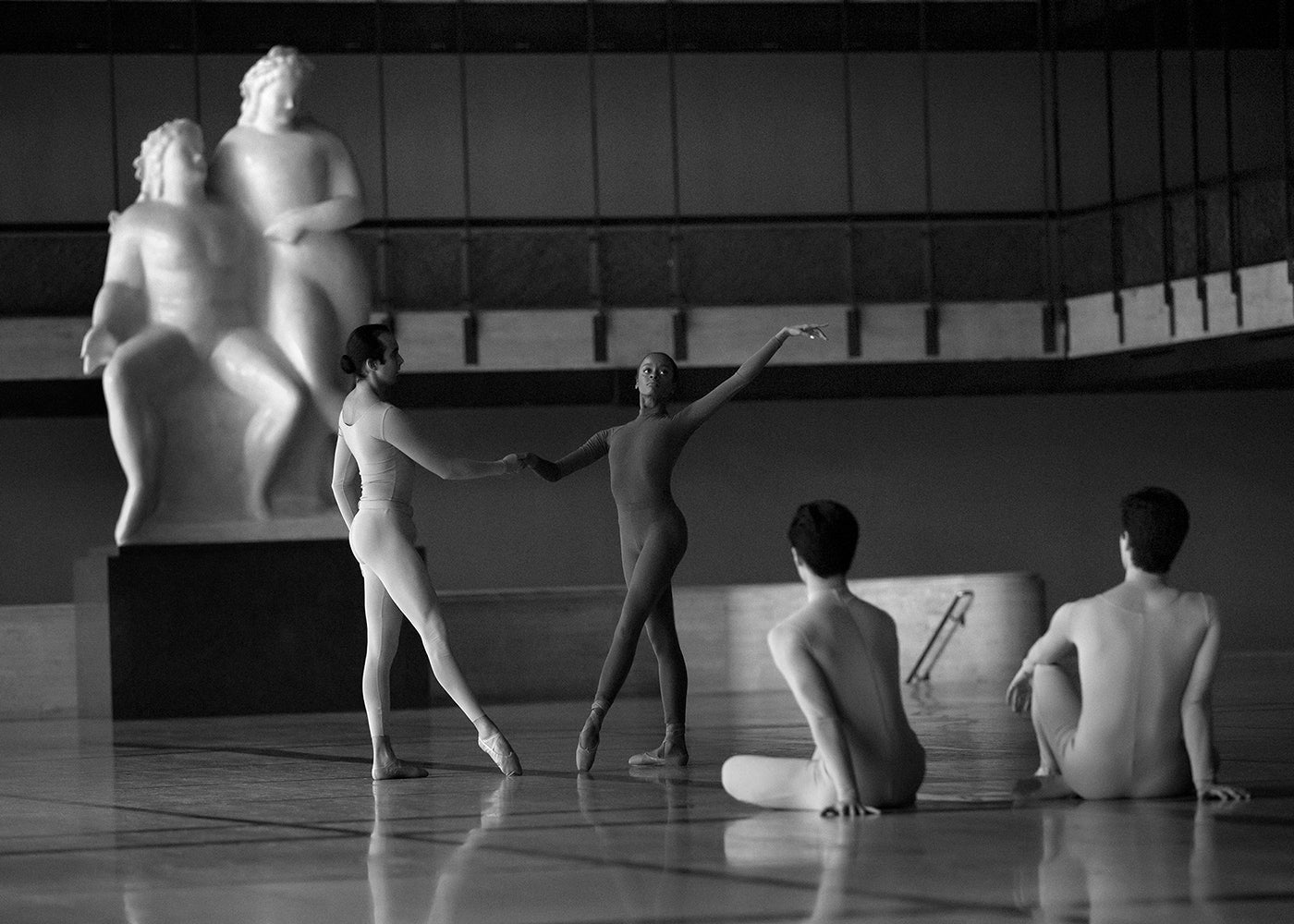Dancing and Screaming Against the Sky
“Profanations,” created by choreographer Faustin Linyekula and music artist Franck Moka, is not a “just” dance piece: it’s a live concert, a cinematic séance.
Continue Reading
World-class review of ballet and dance.
The New York City Ballet’s Digital Spring Season continued this week with the premiere of the dance film When We Fell, choreographed by Kyle Abraham and co-directed by Abraham and Ryan Marie Helfant. This was an ambitious departure from the old performance recordings and Zoom rehearsal footage of the first three weeks of the season. It was also an about-face from the first ensemble work Abraham made for the company: 2018’s splashy, rap-scored “The Runaway.” When We Fell is somber and distilled. No matter which vein Abraham is working in, his singular choreographic voice and clear messaging come through.

Sebastian Villarini-Velez and India Bradley with KJ Takahashi and Jonathan Fahoury in “When We Fell” by Kyle Abraham. Photograph by Erin Baiano


“Uncommonly intelligent, substantial coverage.”
Your weekly source for world-class dance reviews, interviews, articles, and more.
Already a paid subscriber? Login
“Profanations,” created by choreographer Faustin Linyekula and music artist Franck Moka, is not a “just” dance piece: it’s a live concert, a cinematic séance.
Continue ReadingWhen Alban Lendorf (b. 1989) was four, he became attentive to the piano. As he explained in an interview with Pointe magazine, when his lessons advanced to the learning of a Chopin waltz, his piano teacher suggested he take dance classes to help open up the music. From the school of The Royal Danish Ballet to the company, his career rocketed forward; by the time he turned twenty-one, he was a principal dancer, still playing the piano and testing a latent gift for acting.
Continue ReadingMarie Antoinette is not an entirely sympathetic character. Her penchant for luxury and extravagance—and the degree to which she was out of touch with the lives of the majority— made her a symbol of the wealth disparity that prompted the French Revolution.
Continue ReadingAscending the Guggenheim Museum's rings through Rashid Johnson's retrospective, “A Poem for Deep Thinkers,” is a dance in of itself.
Continue Reading
comments